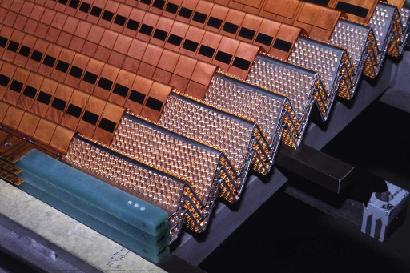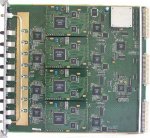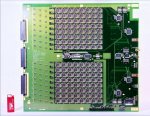The acquisition of calorimeter data requires several steps: actual acquisition, triggering, and calibration. The acquisition electronics, called Front-End, has the role of reading and formatting the signals coming from the calorimeter cells, and storing the information in an analog memory. These cards are very close to the detector and subject to intense radiation. They have therefore required a specific “radiation-hard” design.
Collisions in the detector follow one another at a rate of 40 million per second. At this frequency, it is not possible to record and store all the data coming from the detector. The ATLAS trigger system decides which events are interesting for physics and need to be retrieved from the analog memory. The Front-End cards then digitize the interesting information, and send it to the next acquisition stage: the ROD cards. This trigger mechanism significantly reduces the data rate sent to the rest of the acquisition chain.
The ROD cards, or Read Out Boards, receive information from the calorimeter Front-End cards by optical fibers at the rate of 1.6Gbit/s. The main role of the ROD boards is to convert the electrical signal received from the Front-End into energy, which is a value more easily exploitable by physicists. RODs also associate the time of arrival of the signal with the corresponding peak energy. To perform these functions, ROD cards make use of programmable electronic components (FPGA) associated with specialized processors for calculation (DSP). The data is then sent by fiber optics to a computer farm
.
The LAPP was responsible for design and production of the ROD cards. The operation of the Liquid Argon calorimeter and the reading of the 200,000 detection channels requires the use of 192 ROD cards in total.
The aging of the detector and the electronics, the variations in the manufacturing processes of the calorimeter detection cells, or even the temperature are all parameters likely to modify the signal coming from the detector cells. In order to overcome these fluctuations, it is necessary to inject a known signal into the detection cells, in order to be able to correct the response signal. To do this, the LAPP, together with other laboratories, designed the Calibration card. The role of this board is to inject a reference signal into each of the calorimeter cells. Each board is capable of handling 128 cells.





















